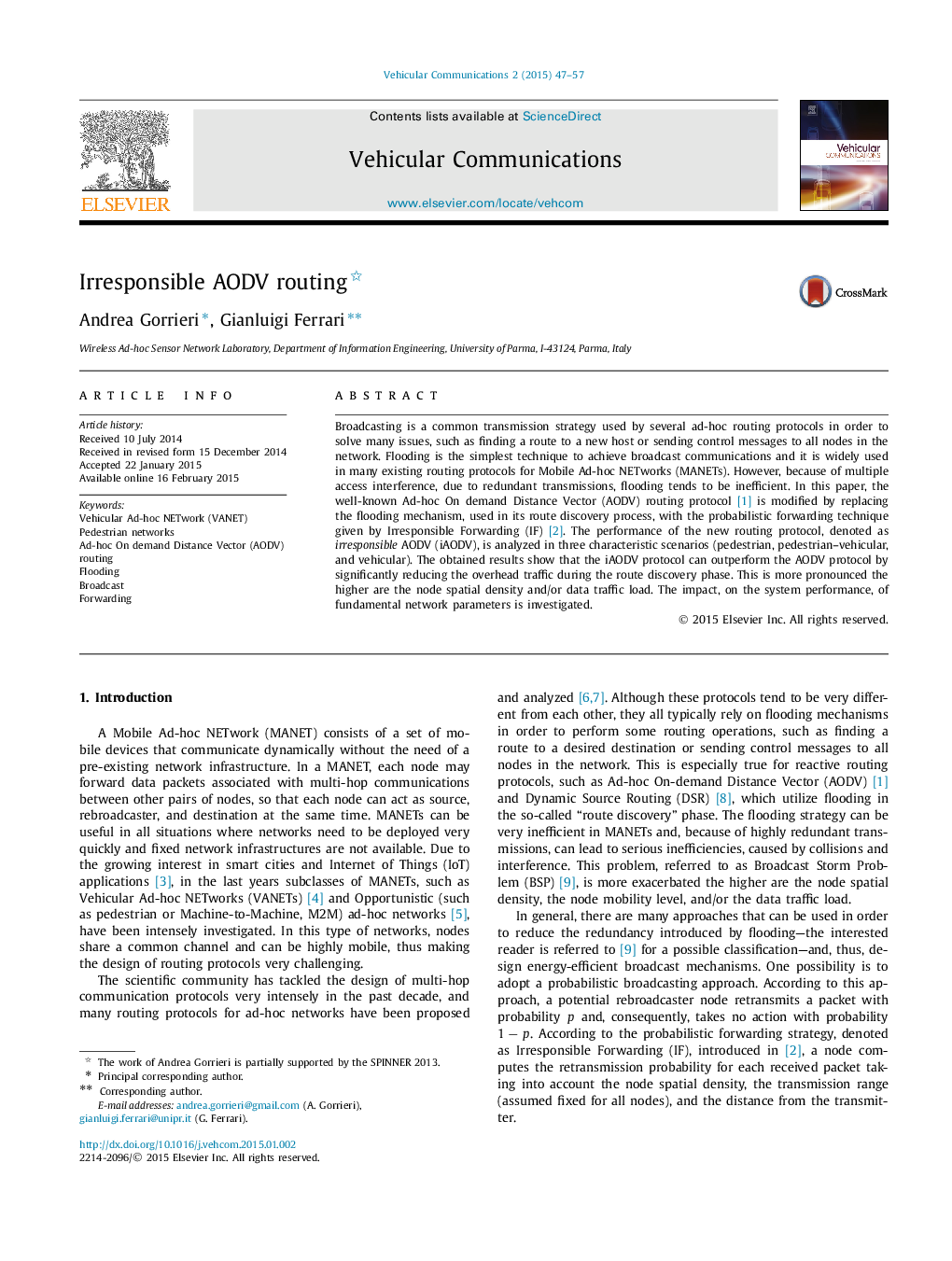| Article ID | Journal | Published Year | Pages | File Type |
|---|---|---|---|---|
| 465731 | Vehicular Communications | 2015 | 11 Pages |
Broadcasting is a common transmission strategy used by several ad-hoc routing protocols in order to solve many issues, such as finding a route to a new host or sending control messages to all nodes in the network. Flooding is the simplest technique to achieve broadcast communications and it is widely used in many existing routing protocols for Mobile Ad-hoc NETworks (MANETs). However, because of multiple access interference, due to redundant transmissions, flooding tends to be inefficient. In this paper, the well-known Ad-hoc On demand Distance Vector (AODV) routing protocol [1] is modified by replacing the flooding mechanism, used in its route discovery process, with the probabilistic forwarding technique given by Irresponsible Forwarding (IF) [2]. The performance of the new routing protocol, denoted as irresponsible AODV (iAODV), is analyzed in three characteristic scenarios (pedestrian, pedestrian–vehicular, and vehicular). The obtained results show that the iAODV protocol can outperform the AODV protocol by significantly reducing the overhead traffic during the route discovery phase. This is more pronounced the higher are the node spatial density and/or data traffic load. The impact, on the system performance, of fundamental network parameters is investigated.
